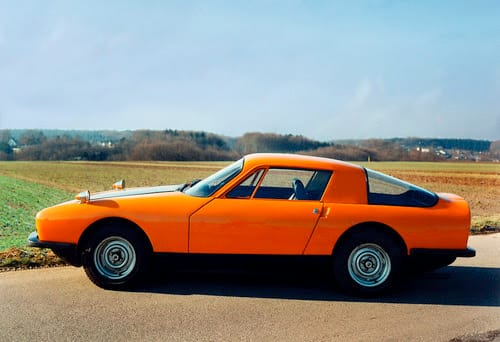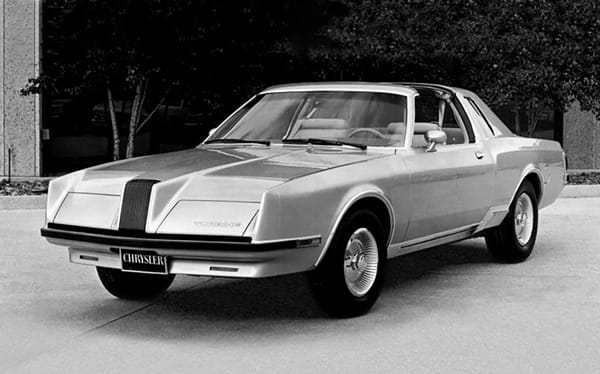Ford Synthesis 2010
Car of the Day #81: 1993 Ford Synthesis 2010
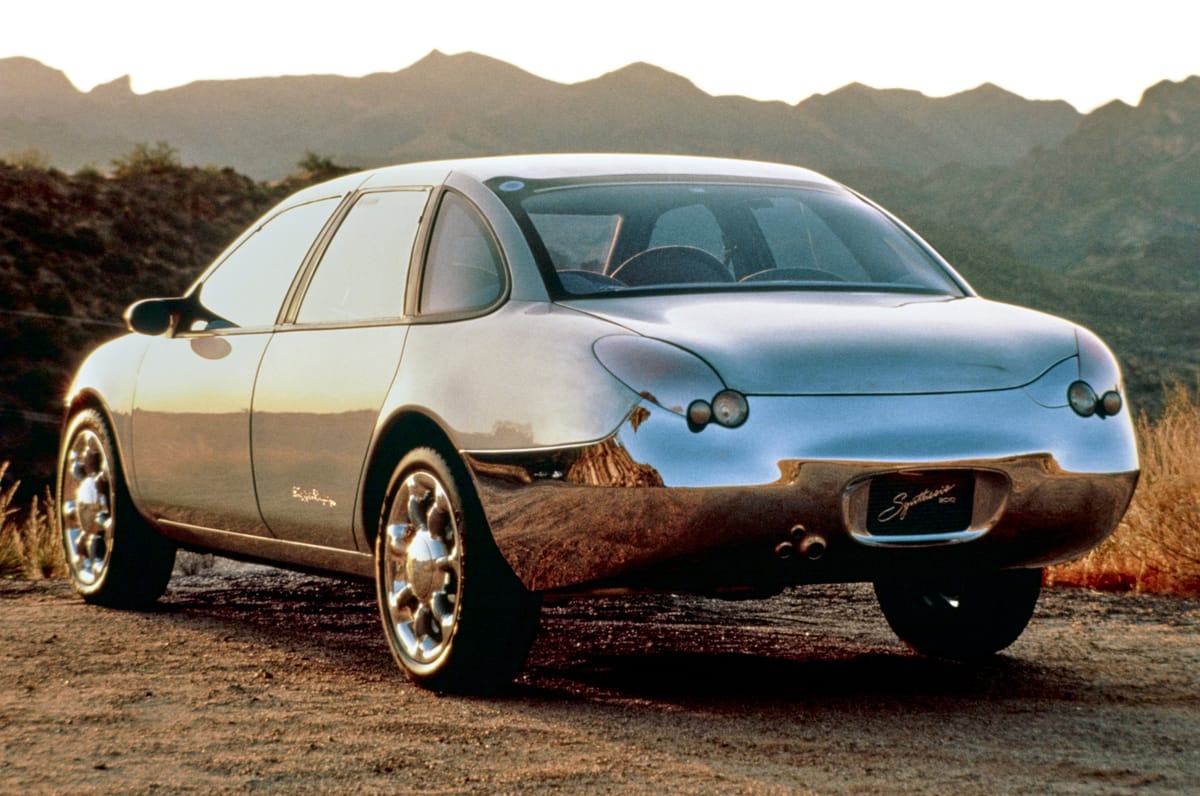
“Oh, no, not another boring car.
Look, I’d hate for you to take my word for it and start to actually believe that marketability always trumps efficiency.
Sure, automakers have been messing around for decades on silly denim-themed trim packages and not bothering to make normal cars more efficient.
Sure, the world spun in the direction of multipurpose SUVs.
Sure, the mainstream sedan is all but dead.
Don’t let the facts get in the way of a good time, specifically 1993 when Ford showed its first foray into flavors of Jelly Belly: the Synthesis 2010.
That’s right, Synthesis 2010 was so early that it had time to morph into the now-iconic “Jellybean” third-generation Ford Taurus and Mercury Sable pair.
As we say here in Canada, this story is a bit of a twofer.
Underneath this melted “year 2010” sedan is actually a very special car from Ford's kissing cousin, Mercury, who was ultimately the loser in all of this.
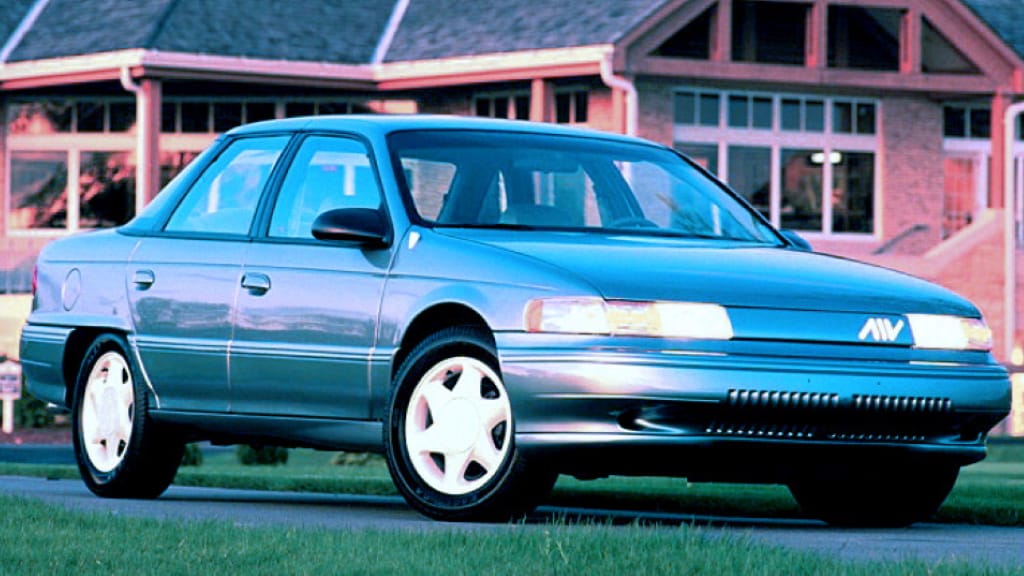
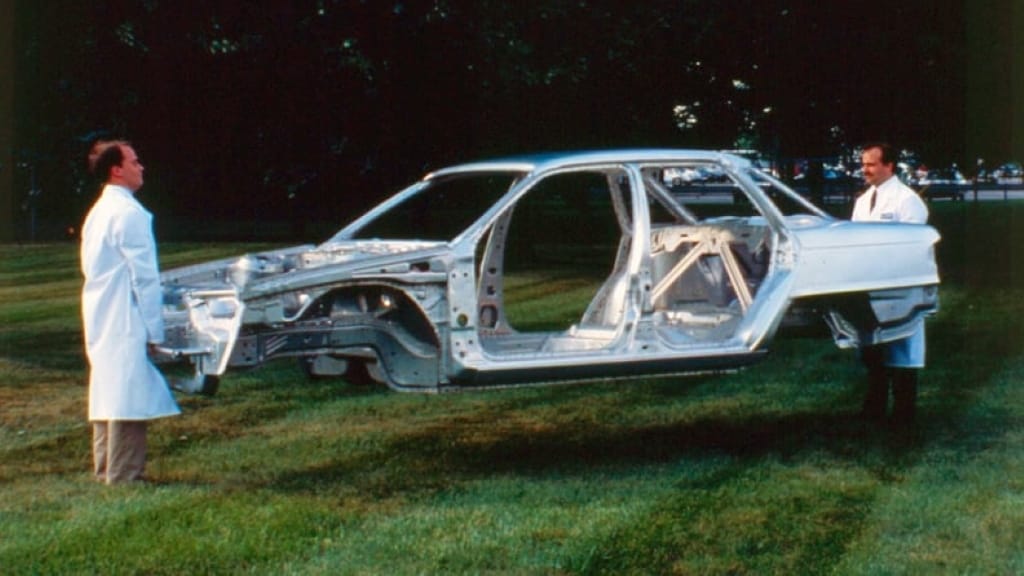
Mercury AIV • via The Autopian
Mercury’s success in smearing its Vaseline-like brand image across multiple donor Ford products killed the messenger; but even by the mid-’90s, it was no longer a very unique brand. (Was Mercury ever all that unique? No, the Capri doesn't count…)
The very special car was the Mercury Sable AIV, an aluminum-intensive second-generation Sable with the heart, brain, and running gear from a 220 horsepower Taurus SHO.
Built in 1993, the AIV would have been quite the C Tier Woodward Ave rival for, say, a Dodge Spirit R/T or Pontiac Grand Prix GTP. In short: it would have been the best-performing second-generation sedan from FoMoCo — its aluminum structure alone saved 181 kg (400 lbs). Thomas Hundal at The Autopian recently published a great overview of the aluminum-intensive thinking that went into the automaker's series of lighter weight cars.
Having grown up in the era of 2nd and 3rd generation Taurus sedans, I can spot its body structure anywhere:
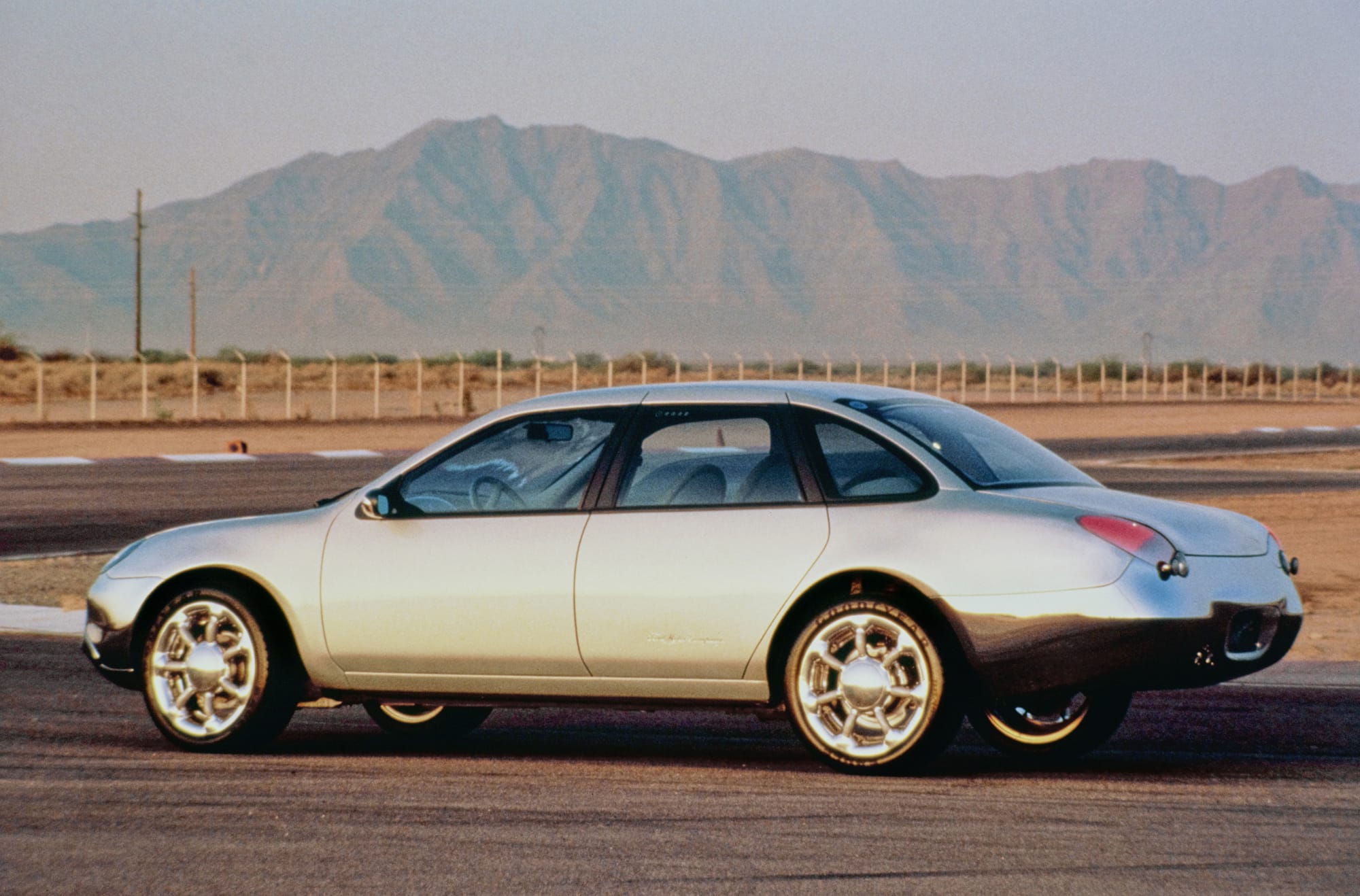
One of the AIVs rose, phoenix-like, from the (soon-to-be) ashes of its namesake and emerged as the Ford Synthesis 2010 concept. It's a little sad that the Ford Synthesis 2010 didn’t grab more headlines, ’cause it relied on many of the SHO-powered AIV's aluminum advances…except in the engine department.
Synthesis 2010 was first fitted with a 1.2-litre 3-cylinder 2-stroke engine, and then with a 1.8-litre 4-cylinder from the Ford Escort. Yay.
I don't have the mechanical ability to create an SHO-engined Synthesis 2010, but if you are, this concept car is actually now in private hands.
Synthesis 2010 was part of Ford's huge collector car auction in 2002 at Christie's that raised a few million bucks as part of a larger strategy to right-size before the recession that ultimately speared its Detroit rivals. Sold for $18,800 Usd., plus fees.
Christie’s auction says of the car:
“Synthesis 2010 uses aluminum extensively in the drivetrain, brakes and suspension arms but most importantly in its complete lightweight aluminum unit body. The aluminum stampings are joined with an experimental "weld bonding" process which combines resistance spot welding with chemical bonding techniques for strength, longevity and reduced noise, vibration and harshness.
“A project team of Tom Scott, Director of International Design, Bill Stuef, Manager of Advanced Vehicle Engineering and Mark Conforzi, International Design Manager, managed the realization of Synthesis 2010. Stuef's work is the hardest to see while Scott's and Conforzi's contributions are right out front. Synthesis 2010's appearance results from aluminum's reluctance to be stamped. It likes to spring back into its original shape and requires designers to work within new limitations, limitations which Synthesis 2010 embodies in its appearance.
“Synthesis 2010 is a four-door sedan, riding on 5-spoke 16" cast alloy wheels with P215/60R-16 Goodyear tires. Brakes are discs at all four corners. The leather trimmed interior features front bucket seats with a console-mounted shifter for the automatic transmission and sound system controls mounted on a flexible stalk. The instrument cluster with blue-faced gauges is tightly packed directly in front of the driver's 4-spoke leather-rimmed steering wheel. Bright aluminum trim accents the dash, instruments and console. The interior's present condition shows use. Other novel features include a blue tinted windshield with a solar panel in the top (which in concept charged the battery and worked a fan), a chrome and cloth steering wheel, a keyless entry system and a distinctive asymmetrical design to the trunk lid.
“The exterior finish is called Ceramic Blue, a semi-transparent coating applied over the polished aluminum panels, and shifts in effect from a light, almost ice blue, hue to nearly plain natural silver depending upon lighting and view angle.”
No notes, except: ditch the 4-cylinder and contact your cable provider to order SHO time for this old concept car.
The SHO engine in a silver on chrome 1,020 kg (2,250 lb) jellybean sedan would have been entertaining, to say the least. How does a sedan with 25 more horsepower and a curb weight of roughly 160 kg (350 lbs) less than the E30 BMW M3 sound? Yeah, baby!
How does it look? Uhhhh…
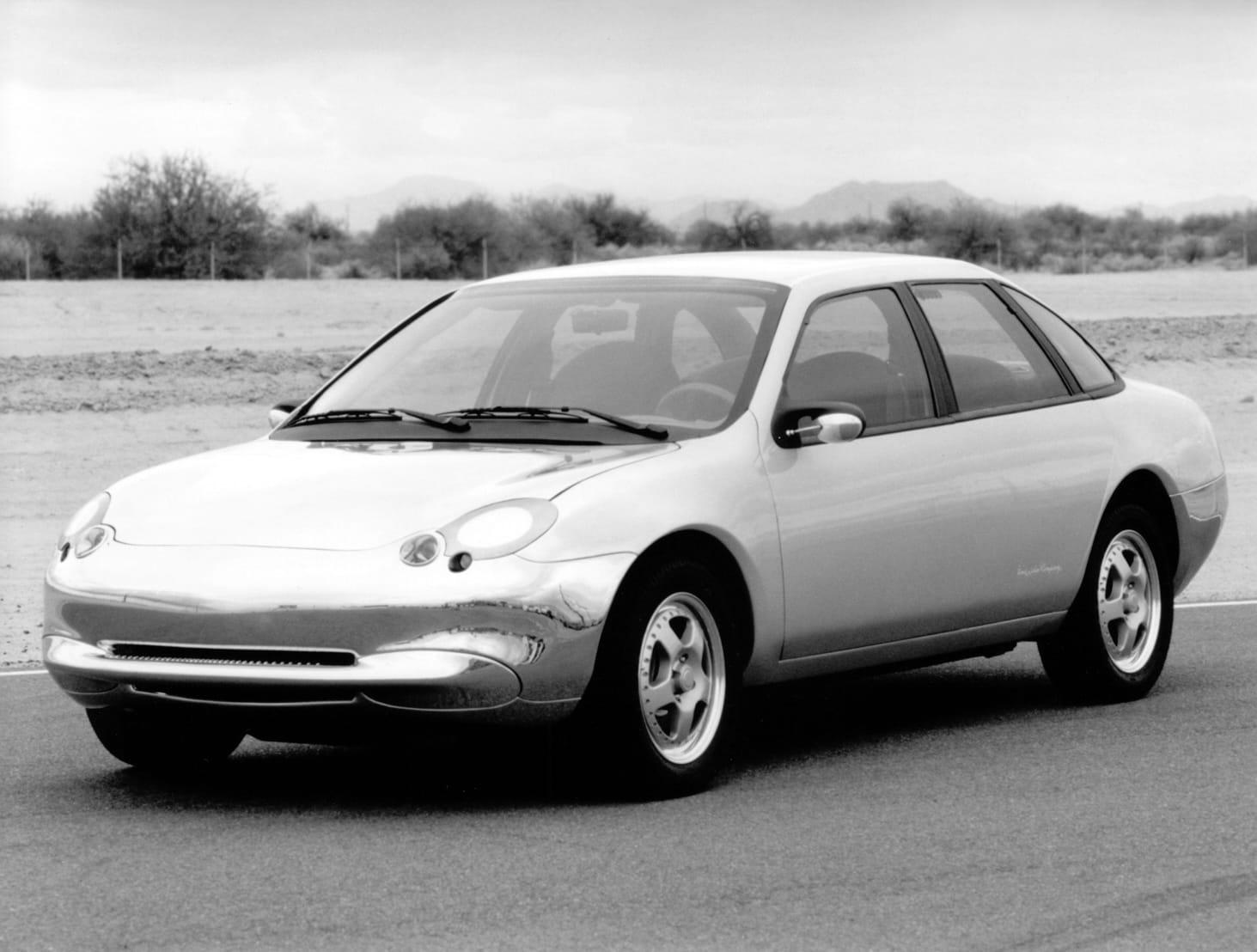
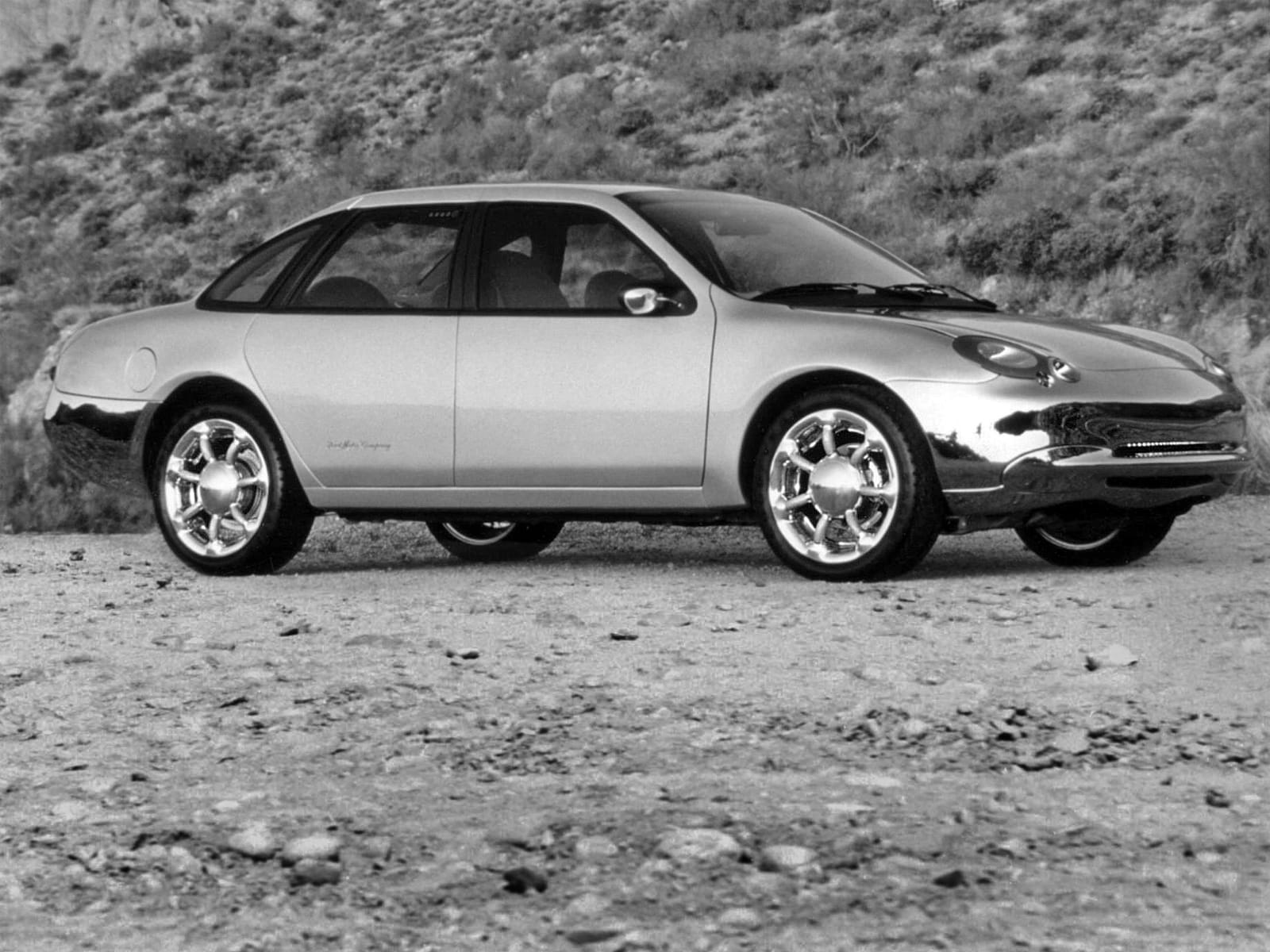
Ford Synthesis 2010 • via Ford
In hindsight, the car could have been exciting! No, really!
Also in hindsight: automakers realized that more savings in the structure of a car allows for additional features (and the wiring needed) to be added with little additional weight penalty. Synthesis 2010's most indulgent feature? A mostly useless solar panel at the top of its windshield.
FoMoCo engineers were right to seek out lighter solutions in later years, but even they may not have foreseen our increased aluminum consumption being used, in part, to obfuscate the market's growing desire for feature-filled vehicles that seem futuristic but end up dead (Sync), bloated beyond their original utility (Active Park Assist)…or worse, recalled (PowerShift).
In a move that seems uncharacteristic today, Ford followed Synthesis 2010 up with the 1996 Synergy 2010, which, as I'm typing this am realizing that I should tackle these as a pair.
More words tomorrow on a 1996 Ford that could be mistaken for a 2026:
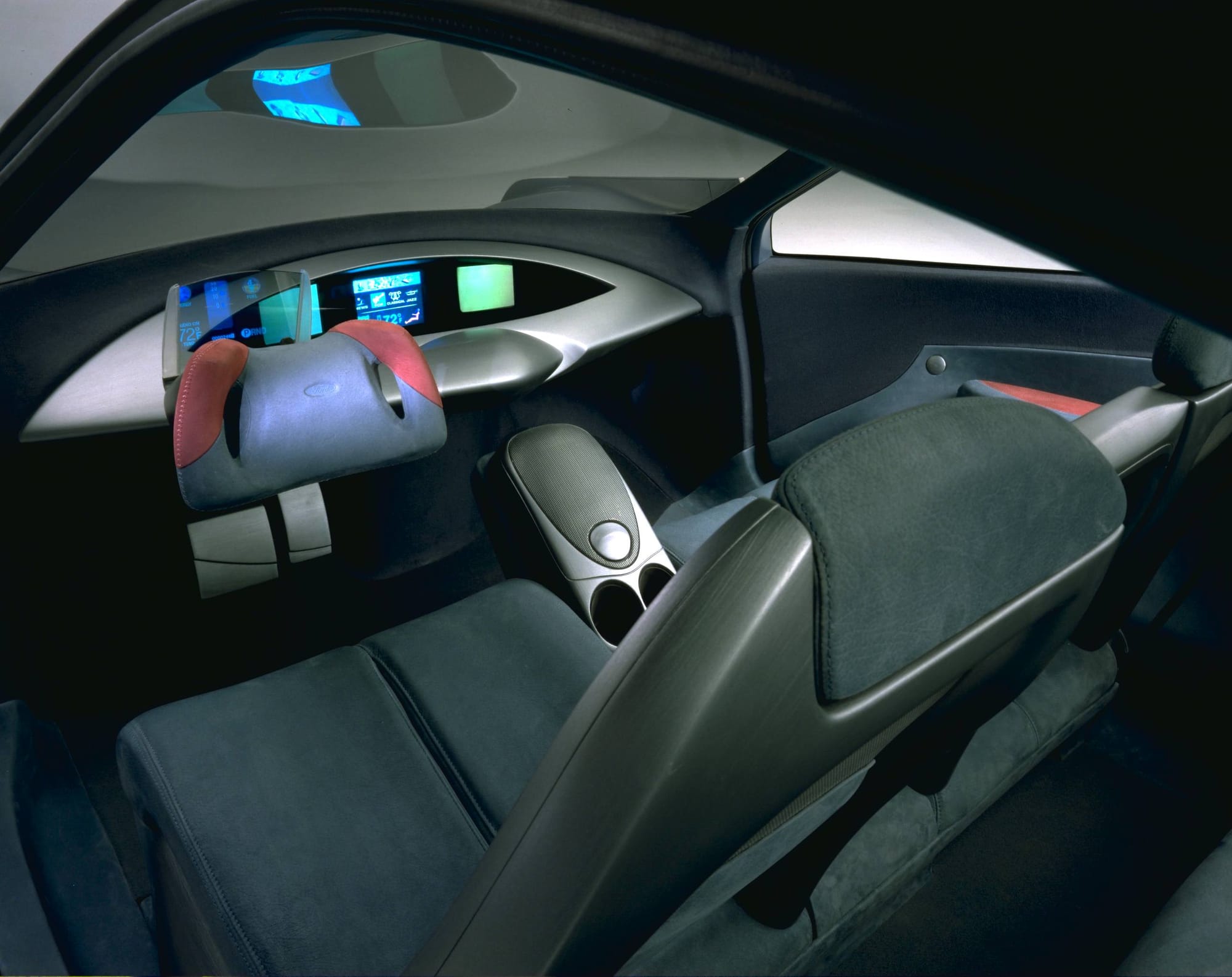
SUPPORTING MEMBERS
Thank you to my supporting members: Ben B., Brad B., Chris G., Daniel G., Damian S., Daniel P., Drew M., Ingrid P., Karl D., Luis O., Michael J., Michael L., Michelle S., Mike B., Mike L., Mike M., Richard W., Sam L., Wiley H.


